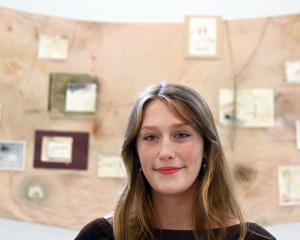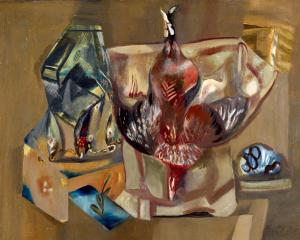Opera Otago is taking a daring step in putting on L'Orfeo by Claudio Monteverdi (1567-1643) as part of the Otago Festival of the Arts.
Not only is it the first significant opera but the style is different from what we usually think of as opera, according to musical director Matthew Leese.
Since graduating from the University of Otago a decade ago, he has been mostly in the US, singing, conducting, teaching and studying early music.
"It's very much a play with music. The music is exceptionally beautiful but in a far more subtle way than when you think of La Boheme or Carmen, which are just big and loud. This is virtuosic in a very different way," he said.
First staged in Manuta, Italy in 1607, L'Orfeo would have been shocking at the time, part of a new style of music that had been around for only 10 or 15 years.
What was special about the music, according to Professor John Drummond, who has made a new translation for this production, was the new way of providing dramatic music.
"Recitative is what we would call it nowadays, where you have a vocal line which is deeply expressive of how a character is feeling and a very simple set of chords underneath it.
"The tension between that vocal line and the chords underneath it creates a really complex, sophisticated and subtle way of expressing how people are feeling in the awkward situations they find themselves in," he said.
Everyone was obsessed with this new music; it became a status symbol and Italian opera companies performed in courts all around Europe, Mr Leese said.
"They were fascinated by this new idea of blending speech and song, because before it had either been straight drama more or less, or absolute singing.
"They imagined this was the way the ancient Greeks had done it and what it might have sounded like with lyres and flutes and things."
The Greek legend of Orpheus and Eurydice about the power of music and love has been a favourite for opera composers from the very beginning and numerous operas have been based on it over the centuries.
Orpheus' music had the power to move gods, humans, animals, plants and even stones.
When his wife Eurydice died of a snakebite shortly after their marriage, he was inconsolable and descended into the underworld to rescue her.
He won over Charon the ferryman with his music and was taken across the Styx to Hades.
There he persuaded its ruler to release her.
She was permitted to follow him out, with the proviso that he must not turn to look at her until they both reach the world of the living.
However, unable to resist checking she was still following, he turned as they reached the light, and she was snatched back to Hades.
This opera, in true baroque style, unlike the original myth, produces a deus ex machina, Apollo, appearing in a cloud and ensuring a happy ending.
In Italy in the 16th and 17th centuries, spectacular productions were staged on special occasions, and opera emerged from that tradition.
All art or classical music at the time was sponsored by the courts of dukes or princes, although by the 1640s opera had moved into public theatres.
Entrepreneurs saw the opportunity and opera acquired other ingredients such as slapstick comedy, according to Prof Drummond.
Translating the text was a difficult task, because Monteverdi had set the original Italian so carefully to bring out the emotional and humorous content, he said.
"I wanted to make it as close to natural declamation as possible.
"When you are translating, you have to try and find as literal a translation as possible, but you also have to try and get the rhythms right and that's very difficult because Italian, of course, has different rhythms from English and a tendency to have words with two syllables at the end which is actually quite challenging, and to keep rhyme schemes when he has rhymes.
"I expect during the production the cast might find some better words here and there."
New research has shown that L'Orfeo was originally performed with just nine singers, which was very suitable for Opera Otago's production, Prof Drummond said.
"It's very cleverly written so if you take a singer out to do a solo, the chorus parts are done by the rest of the cast."
It's a concept that excites Matthew Leese: "The effect of only having nine singers in the cast is that you really do get this blend of virtuosic singing and also a very tight ensemble because the choruses are much more like madrigals ...
"The chorus comments on what's going on and also gives deep insights into the characters.
"In a way the chorus acts like the audience's response to what's going on on stage."
Coming from a musical family - his sister Anna is making her name as an opera singer in Europe and another sister Katherine, aka KatBite, a singer-songwriter living in Cologne, will be presenting her "sarcastic pop" at the festival club - he is delighted to be invited back to conduct this opera.
Most conductors don't get that sort of respect until they have grey hair, Leese (31) says with a laugh.
Opera Otago is developing a reputation for producing contemporary works, such as Anthony Ritchie's The God Boy, and John Drummond's Larnach, as well as early works such as Salieri's Falstaff, Mozart's Cosi fan tutte, and now Monteverdi's L'Orfeo.
In fact, this is not the first Dunedin production of Monteverdi's L'Orfeo.
When Prof Drummond first came to Dunedin he staged a production in Marama Hall in 1976.
"Everyone said 'you know about opera. We should do opera', so I thought we'll start at the beginning," he said with a laugh.
See it
Monteverdi's L'Orfeo is on at the Mayfair Theatre on October 10, 12, 13 and 15 in a new translation by John Drummond, as part of the Otago Festival of the Arts. It is directed by Jacqueline Coats, with musical direction by Matthew Leese, choreography by Daniel Belton, and features American tenor Daniel Carberg and local soprano Rebecca Ryan.












